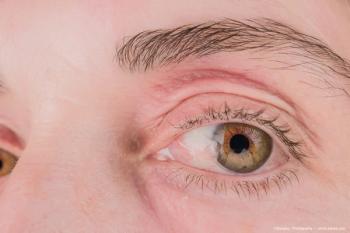
- Ophthalmology Times: March 2023
- Volume 48
- Issue 3
The challenges of tube shunts in pediatric glaucoma surgery
Hurdles include limited space, handling thin sclera, choosing the right site.
Reviewed by Elena Bitrian, MD
Performing
The challenges that surgeons are confronted with surgically in these eyes are the limited working space and palpebral fissure, axial length, and avoidance of the thin sclera and shallow scleral pass. Surgeons must also plan for ocular growth and the potential for occlusion after
When the decision to perform shunt sugery has been made, the surgeons then face a number of preoperative considerations: choice of tube type, either valved (Ahmed Glaucoma Valve, New World Medical) or non-valved (Baerveldt Glaucoma Implant, Johnson & Johnson Surgical Vision; Ahmed ClearPath, New World Medical); surgical site, either superotemporal or inferonasal; looking for scarring or thinning; and finally, the conjunctival incision, a limbus-based conjunctival flap for aniridia and contact lens.
Special cases
There are special cases among this patient population that require additional focus. For pediatric patients with Sturge-Weber syndrome, Bitrian advised surgeons to avoid a rapid decrease in IOP, to use Healon and an anterior chamber maintainer, and to avoid fenestrations, intraluminal stents, and staged procedures.
In patients with aniridia, a limbal-based conjunctival incision is required and the surgeon should avoid touching the lens. The presence of uveitis requires that hypotony be avoided because of poor ciliary body function, as well as valved devices and intraluminal stents.
The last special consideration is cataract surgery. Bitrian advised that the tube be positioned in the sulcus or pars plana to both protect the cornea and prevent tubal erosions. In this scenario, there is a risk of tubal occlusion, and the tube should be left long to facilitate direct visualization.
In cases needing a second shunt placement, Bitrian advised that the shunt be located inferonasally. Use of a second shunt carries the risk of corneal failure and exposure. In addition, the question arises about implanting the same glaucoma device or a different one. The development of diplopia is another factor to be considered in patients receiving a second shunt.
Complications associated with shunt implantation include pupillary irregularities, lenticular opacification, extrusion, strabismus, tubal migration, and tube-cornea touch.
Pearls
Bitrian’s suggestions for successful tube shunt surgeries in children include use of a limbus-based approach, which she considers to be superior; a sclerostomy track parallel to the limbus in the periphery; leaving long tubes, especially in infants; strong closure of Tenon’s and the conjunctiva; careful monitoring of patients for need of tube positioning; and early resolution of complications.
Elena Bitrian, MD
E: [email protected]
Dr. Bitrian has no financial disclosures related to this content.
Articles in this issue
over 2 years ago
Virtual reality brings care to at-need areasover 2 years ago
Advanced IOLs provide array of options for cataract surgeonsover 2 years ago
Optimizing vision outcomes and diabetic macular edemaover 2 years ago
Jumping into gene therapy with collaboration, innovationover 2 years ago
Driving with glaucoma: Steering clear of vision issuesover 2 years ago
LaZrPlastique: The non–cutting edge over LASIKover 2 years ago
The evolution of corneal transplantation surgeryNewsletter
Don’t miss out—get Ophthalmology Times updates on the latest clinical advancements and expert interviews, straight to your inbox.













































.png)


